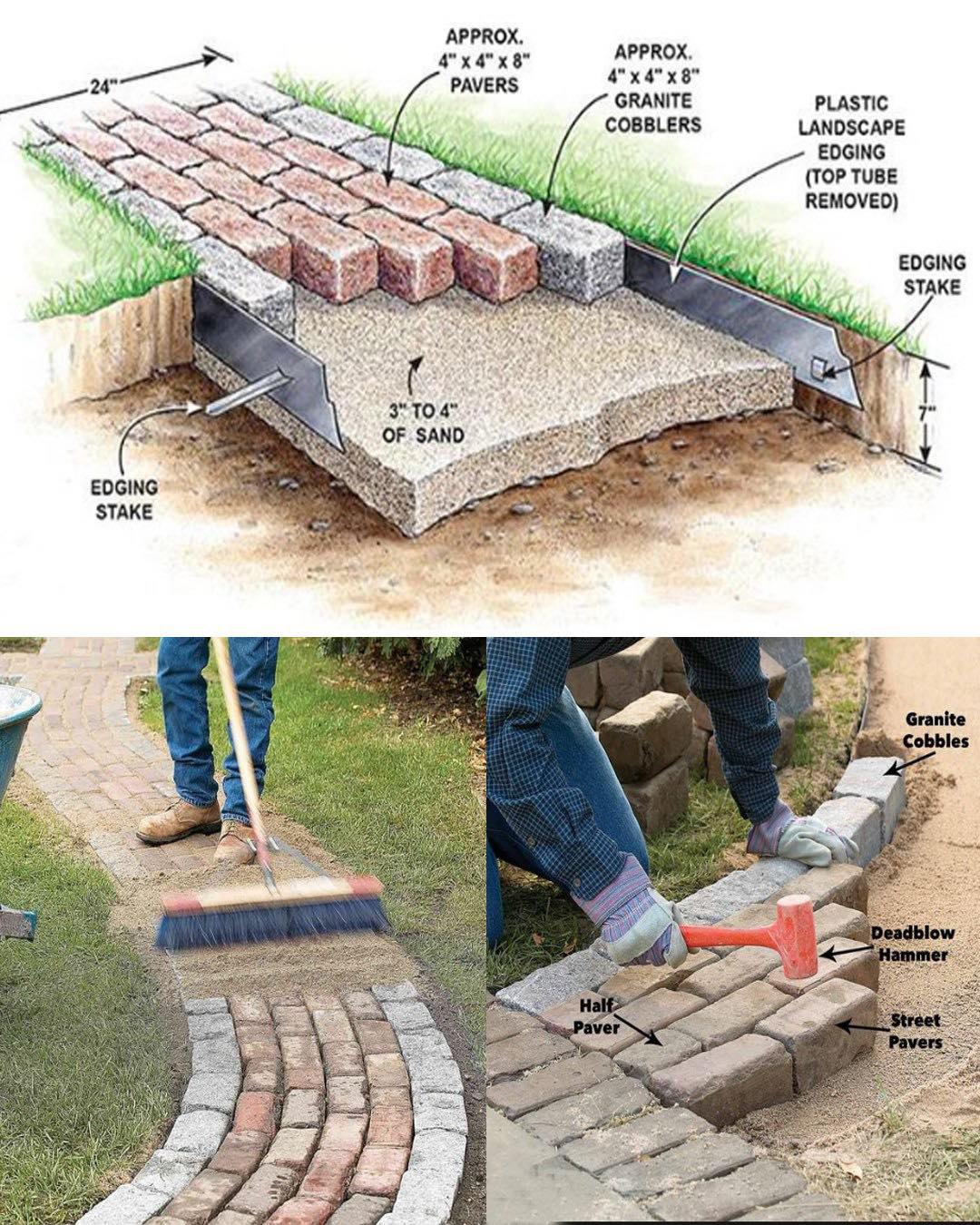Are you looking to enhance the charm and functionality of your garden? A brick walkway could be the perfect addition! Not only does it offer a practical pathway through your outdoor space, but it also adds a touch of timeless elegance. With just a few materials and a bit of elbow grease, you can create a beautiful brick walkway that will enhance the aesthetic appeal of your garden. Follow these four simple steps to bring your vision to life.

Step 1: Planning and Preparation
Before you start laying bricks, take some time to plan out your walkway. Consider the layout and design, taking into account factors such as the shape of your garden, any existing landscaping features, and the desired pathway width. You can use stakes and string to mark out the area where the walkway will go, giving you a clear visual guide as you work.
Next, prepare the ground for the walkway. Use a shovel to remove any existing grass, weeds, or debris from the area, and then use a rake to smooth out the soil. It’s important to ensure that the ground is level before you begin laying bricks, so take the time to make any necessary adjustments.
Step 2: Lay the Foundation
Once the ground is prepared, it’s time to lay the foundation for your walkway. Start by spreading a layer of gravel or crushed stone over the entire area, using a rake to spread it out evenly. This will provide a stable base for your bricks and help to prevent them from shifting over time.

Next, use a tamper to compact the gravel or stone, ensuring that it is firmly packed down. This will help to create a solid foundation for your walkway and prevent any sinking or shifting once the bricks are in place.
Step 3: Lay the Bricks
With the foundation in place, it’s time to start laying the bricks for your walkway. Begin by placing the bricks in the desired pattern, using a straight edge and a level to ensure that they are aligned properly. You can choose from a variety of patterns, such as herringbone or running bond, depending on your personal preference.
As you lay the bricks, be sure to leave a small gap between each one for jointing sand. This will help to lock the bricks in place and provide stability to the walkway. Once all of the bricks are in place, use a broom to sweep jointing sand into the gaps, filling them completely.
Step 4: Finishing Touches
Once the bricks are laid and the joints are filled, the final step is to add the finishing touches to your walkway. Use a hose to lightly spray the entire area, which will help to settle the sand into the joints and create a solid surface.
If desired, you can also add a border to the walkway using bricks or other landscaping materials. This will help to define the edges of the walkway and add a polished finishing touch to your garden.
With these four simple steps, you can create a beautiful brick walkway that will enhance the beauty and functionality of your garden for years to come. So roll up your sleeves, gather your materials, and get ready to transform your outdoor space with this DIY project!
News
JJ Redick reacts to Luka Doncic trade for Anthony Davis
In one of the most jaw-dropping moves of the season, the NBA landscape was rocked by the blockbuster trade involving Luka Dončić and Anthony Davis—a swap that has sent ripples of excitement, disbelief, and heated discussion through the league. Among…
Anthony Davis FULL reaction to trade to Mavericks for Luka Doncic
In a blockbuster move that sent shockwaves through the NBA and left fans reeling, Anthony Davis has been traded to the Dallas Mavericks in exchange for Luka Dončić. In the immediate aftermath of the news, Davis took to the media…
Shaq reacts to Dallas Mavericks wanting Kevin Durant after Luka-AD trade 
In the constantly shifting world of the NBA, trade rumors and blockbuster moves are a regular part of the season’s drama. The latest twist has fans buzzing: the Dallas Mavericks have reportedly set their sights on acquiring Kevin Durant in…
Donovan Mitchell FILTHY poster dunk on Kristaps Porzingis 
In a game filled with high-intensity moments and jaw-dropping highlights, one play in particular has left fans and analysts buzzing about Donovan Mitchell’s latest display of athleticism. Early in the contest, with the atmosphere already charged by an evenly matched…
Joel Embiid hits go-ahead bucket vs Mavs then chats with Anthony Davis after game
In one of the most thrilling contests of the season, Joel Embiid delivered a clutch performance against the Dallas Mavericks, punctuating the game with a go-ahead bucket that sent the home crowd into a frenzy. The atmosphere in the arena…
D’Angelo Russell game winner as Nets hit two 3’s in 3 seconds to win vs Rockets 
In one of the most electrifying moments in recent NBA history, D’Angelo Russell delivered an unforgettable game-winner that left fans and commentators in complete awe. With the Brooklyn Nets locked in a tense battle against the Houston Rockets, the outcome…
End of content
No more pages to load











